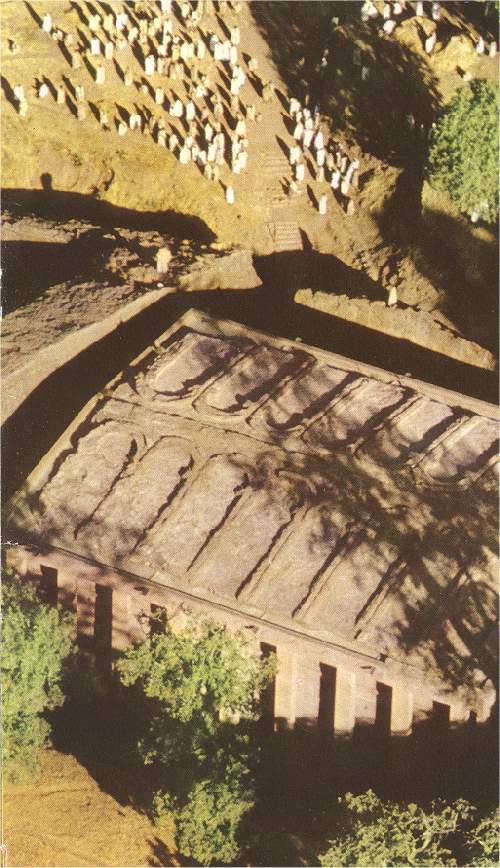
Lalibela---
the New Jerasulem
In the early
12th century, a child was born in the province of Wollo, who was destined to
become both Saint and King. At the time of his birth, he was surrounded by a
dense cloud of bees and, believing these to be the soldiers who would one day
serve her son, .his mother gave him a name which means "the bees recognise his
sovereignty": Lalibela.Today, Lalibela is the name of the township which the Royal Saint transformed into one of the wonders of the world. At his command, 11 monolithic churches were hewn out of the living rock... the logistics of their construction as baffling to experts today as they were to the Royal Chroniclers of old who, unable to explain how the miracle had been performed, wrote that King Lalibela had the help of angels.
Standing in two groups, on either side of the river called Jordan, the churches are still worshipped in today. To visit them, to marvel at their mighty architecture, magnificent facades and splendid interiors-many richly carved and painted-you follow your guide through narrow tunnels, down rock-hewn steps, through tree-shaded. groves. In one of the churches, you will be shown the cloth-covered "Pillar of Light" against which Christ is said to have leaned while appearing to King Lalibela in a dream. And to visit another church is said to assure you of going to heaven, for it contains the tomb of the King himself.
The awe-inspiring splendour of the churches of Lalibela are enhanced by the exceptional beauty of their surroundings, and by their situation in the heart of a picturesque, friendly village, nestling high in the hills. Another of its distinctive features are its tukuls the round dwelling-houses found everywhere in Ethiopia but here, and in a few other places, two-storeyed.
